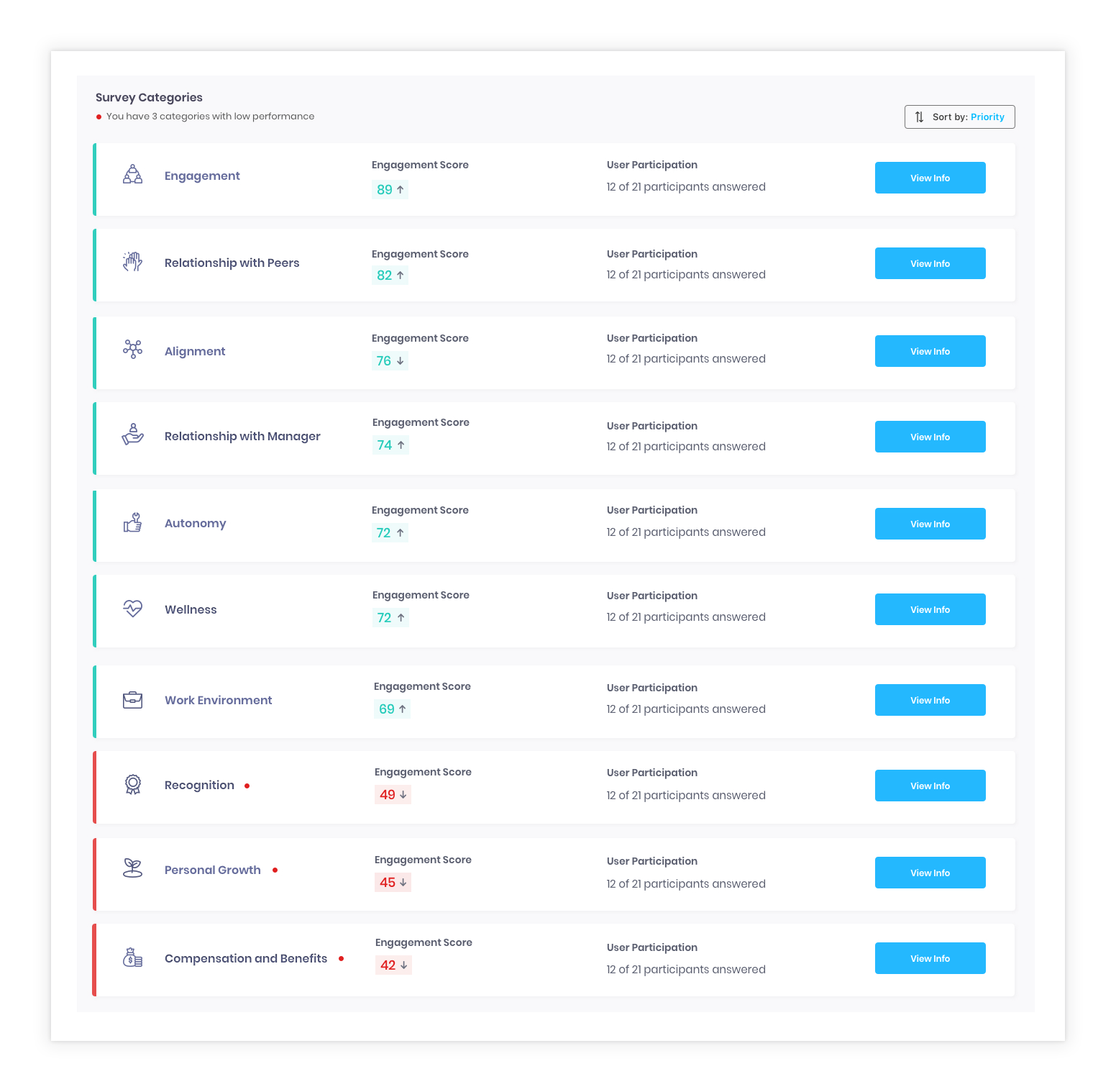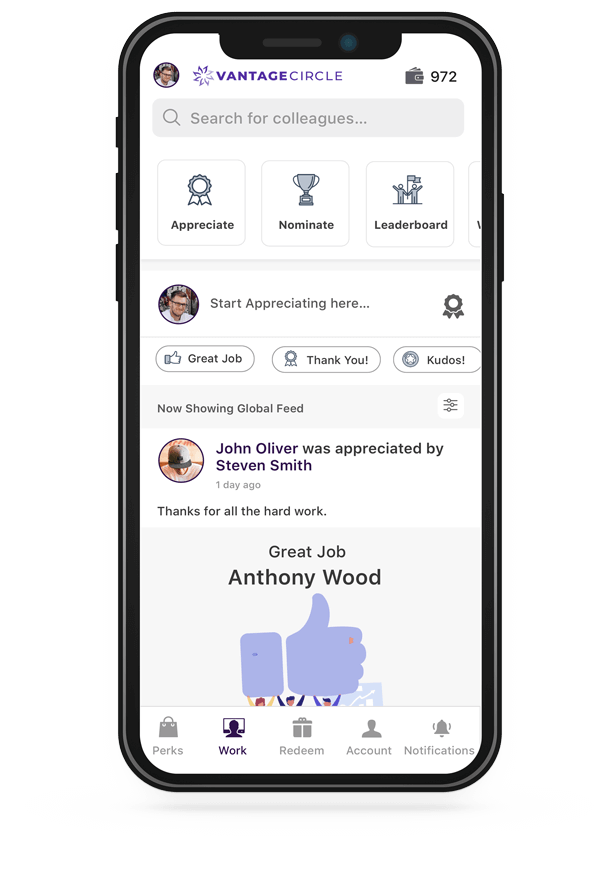35+ Internal Communication Best Practices For Charged Synergy
Ever thought about what helps a team work great together? It is not a secret – good communication within the team is the key. This blog shares 35+ internal communication best practices that you can't avoid at any cost!
Let’s begin by understanding what internal communication is.
What Is Internal Communication?

Internal communication is how everyone in a team shares information within a company. Imagine it's like you and your friends talking to make sure everything runs smoothly.
In a company, good internal communication helps everyone know what they're doing and work together smoothly. It's like making sure everyone's on the same page.
Know more here: 10 Reasons Why Internal Communication is Important in the Workplace
The Changing Way Of Internal Communication
Work talk is different now. Instead of chatting in the office, we have virtual coffee breaks and Zoom meetings while working from home on Mondays. But have we stopped talking in person? What if talking face-to-face is still really important, even with these changes? Keep reading to find out and learn the important things about how we talk inside a team!
What Makes Good/ Effective Internal Communications?

In the world of good communication, some things stand out. The following are the building blocks of a strong internal communications strategy.
A. Clear and Simple Messages
Imagine getting a message that confuses you. Clear messages are like a well-lit path, not a confusing maze. That's the power of clear messaging. Transparency, too, is crucial. It's not just a trend; it builds trust. So, keep it clear whether you work from home or in the office.
B. Using Different Ways to Communicate
Sending messages is like picking from a buffet of talk methods - emails, meetings, and other internal communication tools. But not every message suits every way. So, choose wisely. It's not just about where you say it but how. Even if you don't meet in person, picking the right way to talk is super important. Let's ensure you deliver your information to the right people at the right time, whether at home or in the office. Want some tips? Keep reading!
Related blog: Understanding The 4 Communication Styles In The Workplace
C. Two-Way Communication
Ever chatted with someone who hears but doesn't really listen? Not cool, huh? That's where two-way communication becomes the hero. It's not just about talking; it's about really listening.
No matter if you're at home or in the office, let's make our talks a two-way street, not just one-sided. Also, here's the secret sauce: feedback and suggestions. So, always talk and listen back at home or in the office!
35+ Internal Communication Best Practices

Talking well at work is like building a strong foundation. It helps create awesome ideas, makes customers happy, and excites the team. But getting better at this can be tricky.
Start by doing these best practices for talking with your teammates. It's like adding good ingredients to make your communication even better!
1. Have a Proper Internal Communications Plan
Create a detailed plan for communication that aligns with your business goals. Pick the right channels and create content that serves the organization's goals.
2. Track Important Numbers
Use email tracking and employee engagement surveys to understand how employees interact with your messages. Get numbers (like open rates) and feedback (how employees feel) to adjust your strategy.
For instance, Vantage Pulse, an employee engagement survey tool, provides detailed engagement scores for 30+ categories.

3. Personalize Your Messages
Customize messages for each employee. Add a personal touch to make employees feel recognized and valued.
4. Use Employee Newsletters
Send out regular newsletters to share important company news. A well-designed newsletter not only informs but also helps build .company culture
5. Make Sure Everyone Gets the Message
Establish strong internal communication channels to reach every employee, even in remote working scenarios. This makes sure important information is accessible to all.
6. Establish Communication Norms
- A research by McKinsey reveals that well-connected teams can increase their productivity by 20 to 25%.*
Define clear communication norms within the organization. This includes expectations regarding response times, meeting etiquette, and the use of communication channels. Clear norms help in maintaining consistency.
7. Encourage Two-way Feedback
Set up systems for feedback and suggestions from employees. This can include surveys or discussion forums. Two-way communication shows the value of employee input and can lead to improvements.
8. Keep Communication Consistent
A majority of companies (60%) lack a long-term strategy for their internal communications.
Have a routine for regular communications to keep everyone informed. Keep information flowing to avoid remote workers feeling neglected.
9. Avoid Giving Too Much Information
Balance how often and how much information you share. Too much can lead to disengagement. Keep messages short and focused on what's necessary.
10. Evaluate Your Strategy Regularly
Check how well your communication strategy is working. Use feedback and numbers to make changes that match your goals.
11. Tailor Your Messages for Different Groups
Make sure your messages fit different groups in your workforce. This prevents information overload and ensures each group gets what they need.
12. Make Messages Accessible on Phones
Ensure your messages can be read on different devices. A mobile-friendly approach accommodates different work styles.
13. Use Visuals in Your Communication
Add visuals like pictures and videos to make communication more engaging. Visuals can explain things better than words alone.
14. Consider Employee Engagement
A majority (56%) of corporate communicators find it challenging to keep employees both informed and engaged.
Ensuring employee recognition is important for good communication at work. When people celebrate each other's achievements, it makes everyone feel happy and creates a positive place to work. This positivity helps everyone talk and work together even better!
Digital solutions like Vantage Rewards add a fun element to recognition, enabling interactive engagement through a real-time social feed.

15. Involve Leaders in Communication
Encourage leaders to take part in communications. When leaders are active, it shows the importance of the messages and promotes transparency.
16. Be Ready for Crisis Communication
Have a plan for communication during tough times. Be ready to communicate quickly and effectively so employees are informed and supported.
17. Train Employees on Communication Tools
Approximately 44% of employees desire increased utilization of internal communication tools within their organization.
Teach employees how to use communication tools. Familiarity with platforms makes communication more efficient.
18. Translate Messages for Different Languages
Translate key communications for different language needs in your workforce. This ensures everyone can understand important information.
19. Use Social Platforms for Communication
Use social media platforms to share communication. This broadens the reach and encourages engagement on familiar platforms.
20. Recognize Employees Through Peers
Create programs that let employees recognize each other. This builds a positive team culture and strengthens bonds among colleagues.
21. Encourage Collaboration Between Departments
Hold regular sessions that encourage collaboration between different departments. Breaking down silos helps everyone understand organizational goals.
22. Provide Opportunities for Learning
Offer chances for continuous learning through webinars or training sessions. This enriches employees' skills and shows commitment to professional development.
23. Highlight Employees in Spotlights
More than half of surveyed workers (51%) state that their last employment anniversary was not acknowledged.
Showcase individual employees or teams through features in newsletters or on internal platforms. Sharing achievements boosts morale.
Related blog: Understanding Employee Spotlight With Examples And Use Of Digital Platforms
24. Promote Wellness in Communication
Include wellness-related communication promoting initiatives for mental and physical well-being. A healthy workforce is a productive one.
25. Use Storytelling in Communication
Tell stories in your communication. Narratives make information more relatable and memorable, creating a deeper connection with the audience.
26. Share Updates on Environmental Efforts
Update employees on the organization's efforts toward environmental sustainability. Communicate eco-friendly initiatives and encourage contributions to a greener workplace.
27. Create Employee Resource Groups
Set up employee groups based on common interests. These groups provide a platform for shared experiences and ideas, fostering a sense of community.
28. Use Technology for Seamless Communication
Explore new technologies to improve communication processes. Consider tech solutions like chatbots or VR to make communication smoother.
29. Have Flexible Communication Policies
Create flexible communication policies that cater to the diverse needs of your workforce. Consider options for teams in different time zones or working non-traditional hours.
30. Emphasize Data Security in Communication
Highlight the importance of data security in all communication channels. Ensure employees know how to safeguard sensitive information, especially when working remotely.
31. Cultivate a Culture of Improvement
Encourage a culture of continuous improvement in communication. Let employees share ideas on improving communication and regularly make feedback-driven improvements.
32. Create Global Communication Strategies
Develop strategies that work for a global workforce. Acknowledge cultural differences and time zone challenges to ensure effective communication worldwide.
33. Use Agile Communication Practices
Use communication practices borrowed from agile project management. This means adjusting strategies based on evolving needs and feedback.
34. Plan Innovative Internal Events
Organize creative internal events or challenges that encourage participation and teamwork. This could be virtual team-building activities or themed communication campaigns.
35. Align Internal and External Communication
Make sure internal and external communication strategies match. Consistent messaging across both fronts builds a coherent organizational identity.
36. Promote Emotional Intelligence in Communication
Encourage the development of emotional intelligence in communication. Training on empathy and active listening contributes to healthier workplace relationships.
37. Accessibility for Persons with Disabilities
Ensure that communication materials are accessible to employees with disabilities. This includes providing alternative formats for:
- written content
- using accessible technology and
- considering the diverse needs of all team members.
Conclusion
In the changing world of internal communication, be effective with virtual and in-person dynamics. Emphasize communication's vital role in creating a united, engaged, and resilient workforce.
Remember, these practices are not one-size-fits-all. They're tools to be adapted and fine-tuned for your organization. Workplace communication is about harmonizing and creating a rhythm for the team.
So, whether you're crafting clear messages, embracing tech, or celebrating achievements, each practice contributes to a workplace where every voice is heard, every idea matters, and every employee is part of the team.
As you start using these practices, remember the goal. It's to create an environment where communication isn't just a necessity but a celebration of collaboration, understanding, and shared success.
Cheers to building a workplace symphony that resonates with harmony and propels your team forward!


















